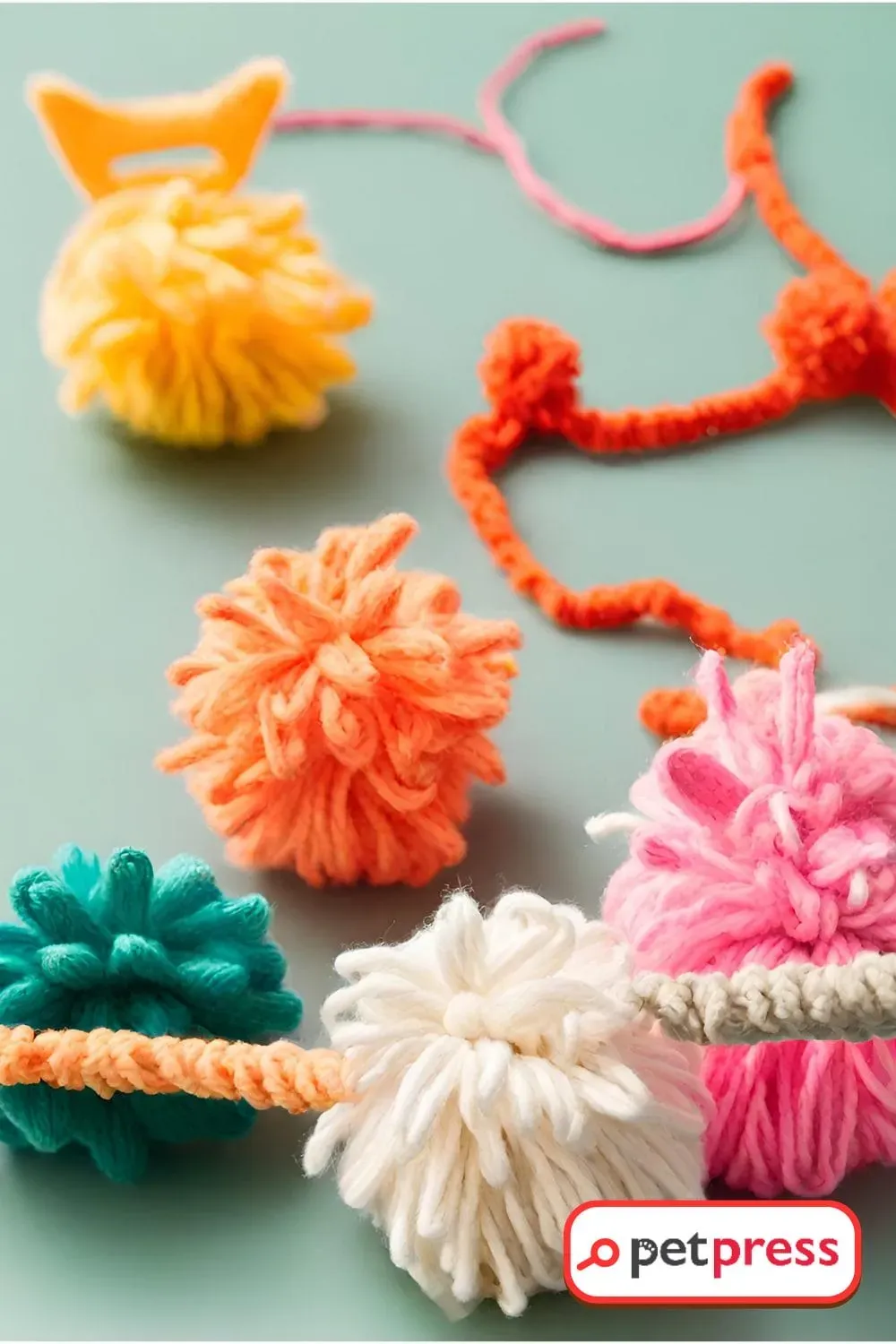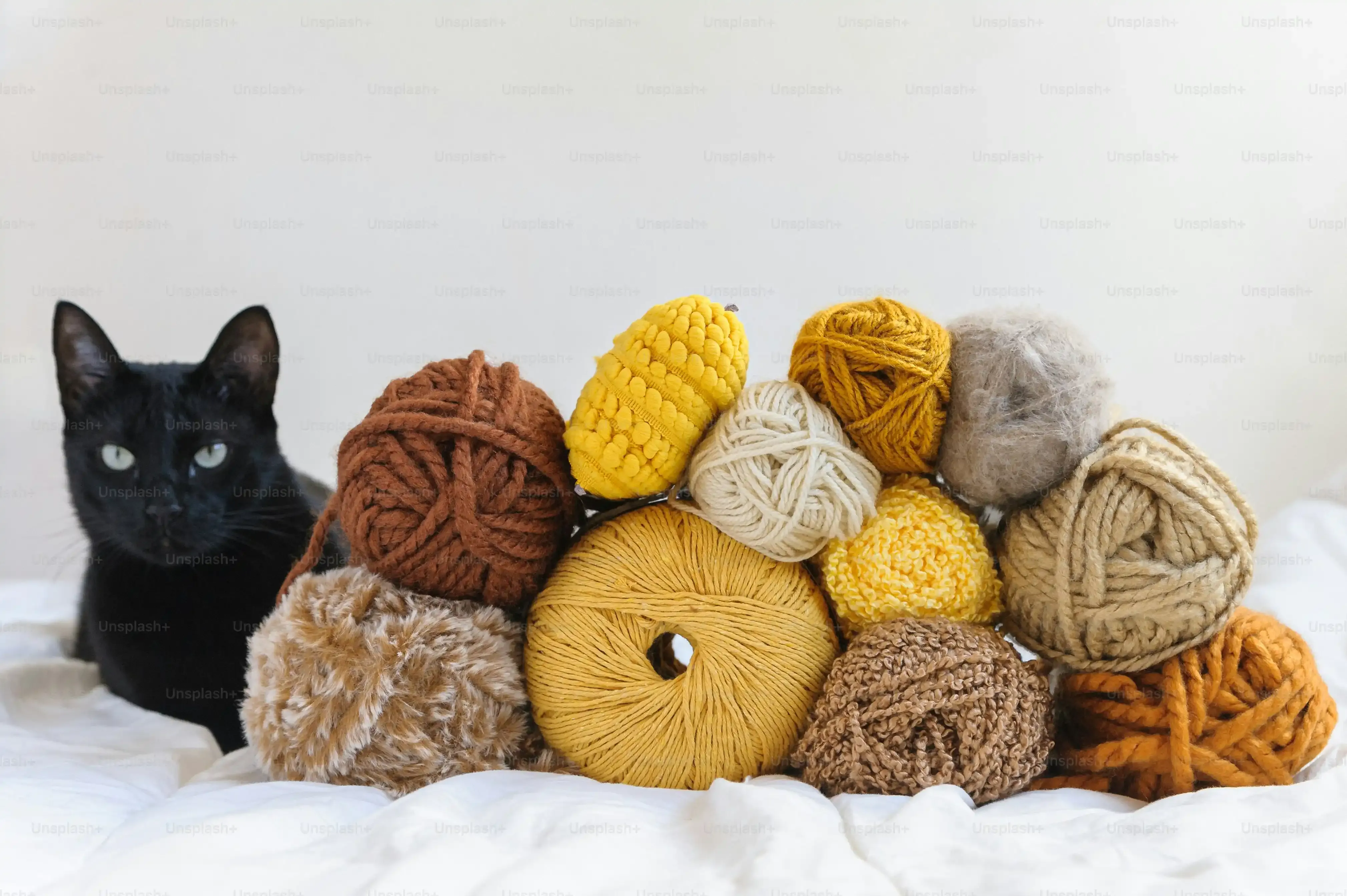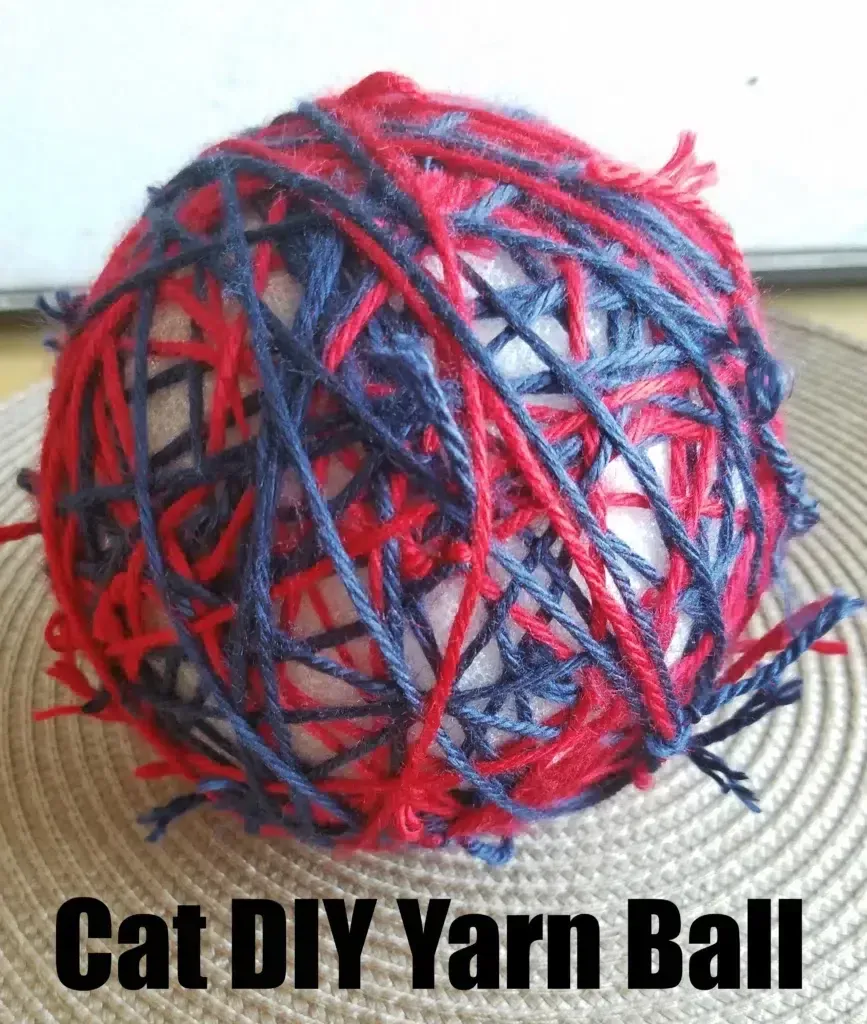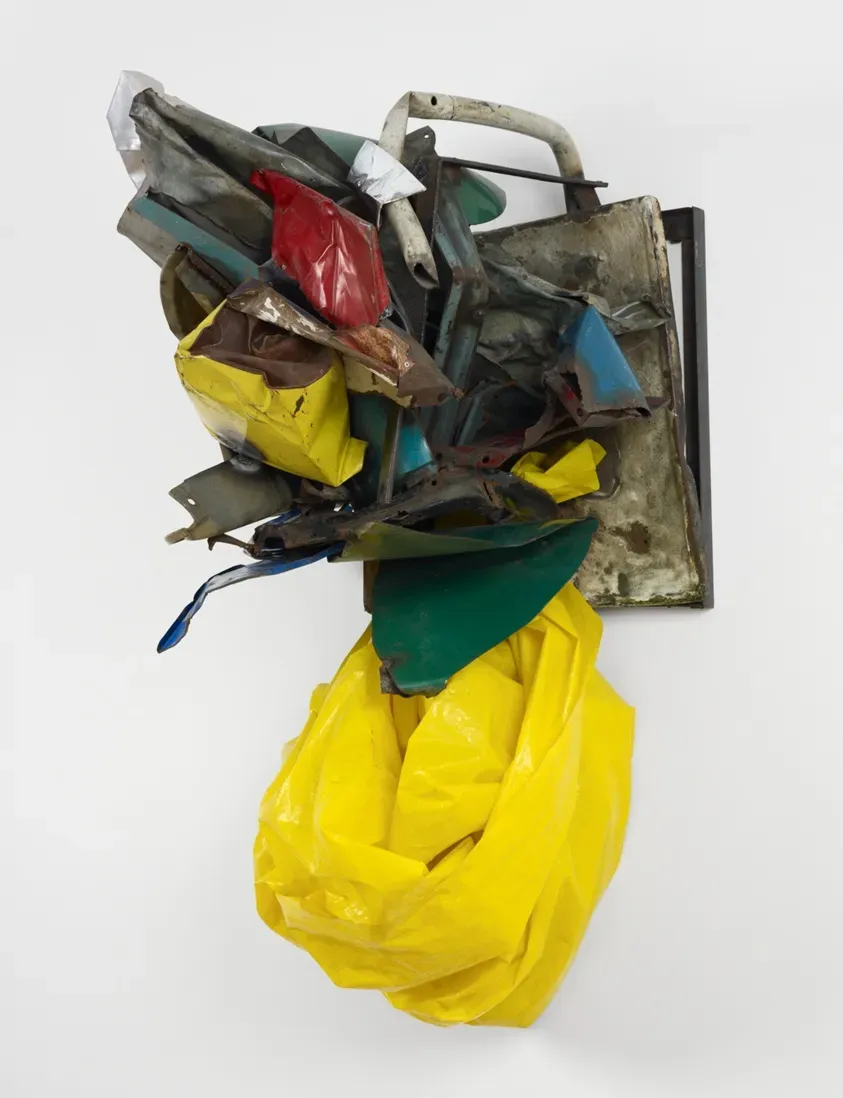Table of Contents
Let's be honest. Your cat probably has a basket overflowing with store-bought toys they barely look at. Or maybe they fixate on that one crumpled piece of paper or the random dust bunny under the couch. Meanwhile, you're tripping over plastic mice and fishing sad, deflated puffballs from under the sofa. It feels like a constant cycle of buying, ignoring, and losing. What if there was a way to create something your furball actually enjoys, something you likely already have lying around? That's where the magic ofdiy cat toys yarncomes in.
Why Bother with DIY Cat Toys Yarn?

Why Bother with DIY Cat Toys Yarn?
The Sad Reality of Store-Bought Toys
Walk into any pet store, and you're faced with aisles of brightly colored cat toys. They promise endless entertainment, guaranteed purrs, and hours of fun. You shell out your hard-earned cash, bring them home, and what happens? Your cat sniffs it, maybe bats it once, and then proceeds to ignore it in favor of the box it came in. Or worse, they demolish it in five minutes, leaving tiny plastic bits everywhere. It feels like a racket, honestly. Buying disposable entertainment that ends up as landfill fodder or, more worryingly, ingested by your pet. This is preciselyWhy Bother with DIY Cat Toys Yarn?becomes a valid question, even a necessary one.
Tailored Fun and Real Connection
Making toys yourself isn't just about saving a few bucks, though that's a nice perk. It's about creating something specific to your cat's quirks. Does Mittens go wild for dangly things? Does Jasper prefer something he can stalk and pounce on? When you make it yourself, you control the size, the texture, the attachments. You can tailor the toy to their individual hunting style and preferences. Plus, the act of creating something for your cat, and then playing with them using that creation, builds a different kind of bond. It's interactive in a way simply tossing a pre-made toy isn't always. You see their genuine engagement with something you crafted.
- Saves money compared to constantly buying new toys.
- Reduces waste from quickly destroyed or ignored toys.
- Allows customization for your cat's specific play style.
- Offers a creative outlet for you.
- Provides an opportunity for interactive play and bonding.
- Lets you control materials for safety (more on this later).
The Simple Satisfaction of Making
There's a quiet satisfaction in making something with your hands, even if it's just a simple pom-pom or a braided string. In a world filled with mass-produced everything, taking a bit of time to craft something for your pet feels grounding. It’s a small act of love, a tangible result of a few minutes or an hour spent. And seeing your cat genuinely enjoying something you made? That's a win. It beats the slight sting of regret when they ignore that expensive, high-tech laser pointer you bought.
Picking the Right Yarn for DIY Cat Toys: Safety First!

Picking the Right Yarn for DIY Cat Toys: Safety First!
Why Yarn Can Be a Hazard (It's Not Just a Myth)
Alright, let's get real for a second. We're talking aboutPicking the Right Yarn for DIY Cat Toys: Safety First!for a reason. While yarn seems innocent enough, a curious cat plus a long string is a recipe for potential disaster. Cats have barbed tongues that make it hard to spit things out, and if they swallow a long strand of yarn, it can cause serious internal damage. We're talking about linear foreign bodies here – the yarn can bunch up intestines like an accordion as the gut tries to move it along. This isn't just some overly cautious warning from the vet; it's a genuine, life-threatening risk. So, while the idea of a simple yarn ball is appealing, we need to approach this with eyes wide open about the dangers.
Choosing Your Materials Wisely
Not all yarn is created equal when it comes to feline safety. Skip the super thin, easily breakable stuff. Anything that frays into thin strands is also a no-go. Think thicker, more durable materials. Natural fibers like cotton or wool *can* be options, but they still pose an ingestion risk if chewed apart. Synthetic blends, particularly acrylic, can be strong but check the fiber content. Avoid anything with sparkle or metallic threads, as these can be sharp and harmful internally. The goal is to choose a yarn that is less likely to be chewed into small, swallowable pieces or unravel into long strands. Consider recycled fabrics cut into strips as an alternative – they often hold up better and aren't designed to unravel like yarn.
Better Choices (Use with Caution & Supervision) | Higher Risk (Generally Avoid) |
|---|---|
Thicker cotton or wool yarn (tightly woven) | Thin, easily broken yarn |
Sturdy acrylic blends | Yarn that frays easily |
Recycled fabric strips | Sparkly or metallic threads |
Supervision is Non-Negotiable
Even with the "safest" yarn choices, the golden rule ofdiy cat toys yarnis supervision. You wouldn't give a toddler a toy with small parts and walk away, right? Treat yarn toys similarly. These are often best used during interactive play sessions where you are actively engaged with your cat and the toy. When playtime is over, put the yarn toy away where your cat can't access it. Don't leave it lying around for unsupervised chewing or boredom-induced ingestion. A few minutes of putting the toy away can save you a world of heartache and a hefty vet bill.
Easy Peasy DIY Cat Toys Yarn Ideas

Easy Peasy DIY Cat Toys Yarn Ideas
The Classic Pom-Pom (With a Twist)
forget the image of your grandma's dusty yarn ball. That's the danger zone we talked about. But a tightly made pom-pom? That's a different story. This is probably the most iconic of allEasy Peasy DIY Cat Toys Yarn Ideas. You just need some yarn and something to wrap it around – your fingers, a fork, or cardboard rings work perfectly. Wrap a ton of yarn, tie it off tightly in the middle, and then snip the loops. The key here is *tight*. Make sure that center tie is secure and trim it into a dense, fluffy ball. The tighter it is, the less likely individual strands are to come loose. Cats love batting these around, the soft texture is appealing, and they roll unpredictably, triggering that prey drive. Just make sure there are no loose ends they can swallow.
Braided Yarn String (Short and Sweet)
Another super simple concept is a braided yarn string. Take three lengths of yarn (again, thicker is better), tie one end in a secure knot, and braid them together tightly. Tie off the other end with another secure knot. The braid creates a thicker, more durable strand than a single piece of yarn. It has a nice weight and texture cats enjoy flicking and chasing. Keep these relatively short. We're not making a jump rope here. A length of 12-18 inches is plenty for interactive play. Anything longer increases the risk of entanglement or ingestion if left unsupervised.
Simple Yarn Toy | What You Need | Why Cats Like It | Safety Note |
|---|---|---|---|
Pom-Pom | Yarn, scissors, something to wrap around (fingers, fork, cardboard) | Rolls unpredictably, soft texture, fun to bat | Must be tied *very* tightly, no loose strands |
Braided String | Yarn (3 lengths), scissors | Thicker texture, good for flicking and chasing | Keep it short, secure knots at both ends |
Yarn Tassels on a Stick (Interactive Favorite)
Combine the appeal of yarn with the irresistible allure of a wand toy. This is whereEasy Peasy DIY Cat Toys Yarn Ideasreally shine for interactive play. Grab a sturdy stick (like a dowel rod or even a strong, smooth twig from the yard – check for splinters!) and tie several lengths of yarn securely to one end. You can make simple strands or small pom-poms or tassels. The stick keeps your hand safely away from excited claws and allows you to mimic prey movements – dangling, twitching, hiding, and darting. This turns playtime into a hunting simulation, which is fantastic for their physical and mental health. Remember to put the wand away when you're done; the stick itself isn't the hazard, but the yarn ends are.
Getting Fancy: More DIY Cat Toys Yarn Projects

Getting Fancy: More DIY Cat Toys Yarn Projects
Yarn Wrapped Cardboard Rolls: Simple Structure, Endless Fun
so you've mastered the pom-pom and the braided string. Ready to step it up just a tiny notch? Let's talk about yarn-wrapped cardboard rolls. You know, the ones leftover from paper towels or toilet paper? These are gold. You just need some yarn and a bit of non-toxic glue (make sure it's safe if ingested, or apply sparingly and let it dry completely). Start wrapping the yarn tightly around the roll, adding a dab of glue every so often to keep it secure. Cover the whole roll. The result is a sturdy tube with a satisfying texture for claws and teeth, and it rolls around unpredictably. You can even hide a treat inside or attach feathers or other safe embellishments securely to the ends. It's a step up from just a ball, offering a different shape and interaction.
Crocheted or Knitted Shapes: For the Crafty Cat Parent
If you happen to know your way around a crochet hook or knitting needles, the world ofGetting Fancy: More DIY Cat Toys Yarn Projectsreally opens up. You can create small, solid shapes like little mice, fish, or simple balls. The key here is making them dense and tightly stitched so they don't unravel easily. Use a sturdy yarn and a smaller hook/needles than you normally would for a blanket or scarf. Stuff them *tightly* with more yarn scraps or even some crinkly material (like clean plastic packaging – cats love that sound!). Avoid poly-fill unless it's completely enclosed and impossible for the cat to access. The texture of the stitches and the firm shape provide excellent grabbing and bunny-kicking opportunities for your feline hunter. Just be extra diligent about weaving in ends securely.
- Yarn-wrapped cardboard rolls offer varied texture and roll unpredictably.
- Crocheted/knitted toys allow for custom shapes and sizes.
- Always ensure embellishments (feathers, etc.) are securely attached.
- Stuffing should be safe and impossible to ingest.
- Tight stitches and secure knots are crucial for unraveling prevention.
Adding Bells and Whistles (Safely, Of Course)
Want to add some extra sensory input? You can incorporate other safe elements into yourGetting Fancy: More DIY Cat Toys Yarn Projects. Small bells sewn *inside* a tightly crocheted or fabric-wrapped toy can add enticing sounds. Make sure the bell is completely enclosed and can't possibly fall out. Crinkle material, as mentioned, is a hit. You can also tie yarn tassels securely to the ends of braided ropes or yarn-wrapped items. Consider adding a loop of sturdy yarn or fabric for hanging the toy from a doorknob (at a safe height!) for a different kind of interactive play. The goal is to add interest while maintaining the core principle: if it can be chewed off and swallowed, it's a risk. Think about attachment methods critically – stitching is usually better than glue for long-term safety.
Keeping DIY Cat Toys Yarn Safe for Your Feline Friend

Keeping DIY Cat Toys Yarn Safe for Your Feline Friend
Choosing Materials That Don't Turn Lethal
we've touched on this, but it bears repeating because it's genuinely critical when you're makingKeeping DIY Cat Toys Yarn Safe for Your Feline Friend. Your material choice isn't just about how it looks or feels; it's about preventing a trip to the emergency vet. Avoid thin, easily broken threads at all costs. Think about what happens if they chew a piece off. Can it be swallowed easily? Will it unravel into a long string? Synthetic yarns, especially cheap ones, can shed microplastics, which isn't great. Natural fibers like cotton or wool are generally better, but they still need to be sturdy and tightly woven. If you can easily snap the yarn with your hands, your cat can definitely chew through it. Consider braiding multiple strands together to increase durability, or better yet, use fabric scraps cut from old t-shirts or fleece blankets. These tend to hold up better against sharp little teeth and claws.
Supervision Isn't Optional, It's the Rule
Look, I get it. Life is busy. You want to give your cat a toy and let them entertain themselves while you fold laundry or stare blankly at your phone. But withdiy cat toys yarn, that's just not a safe bet. These toys are best used for interactive play sessions. You hold the wand, you dangle the pom-pom, you toss the braided string. You are actively engaged, watching how your cat interacts with the toy. Are they trying to eat it? Are pieces coming loose? If you see them trying to ingest the yarn, redirect their attention immediately. When playtime is over, the yarn toy goes away. Simple as that. Stick it in a drawer, a high shelf, a sealed container – anywhere your cat cannot access it when you're not around. Think of it as putting away sharp knives; they're fine when used correctly, but not something you leave lying around.
Safety Action | Why It's Important |
|---|---|
Choose sturdy, thick yarn/fabric. | Less likely to break, fray, or be swallowed. |
Ensure knots are *very* secure. | Prevents unraveling and ingestion of strands. |
Use for supervised, interactive play only. | Allows you to monitor interaction and prevent ingestion. |
Store toys away when not in use. | Removes the risk of unsupervised chewing. |
Regular Inspection: The Toy Check-Up
Even the most well-made toy will eventually show signs of wear and tear, especially when subjected to the rigorous hunting techniques of a determined feline. This is where regular inspection becomes crucial forKeeping DIY Cat Toys Yarn Safe for Your Feline Friend. Before each play session, give the toy a once-over. Are there any loose strands? Has the yarn started to fray significantly? Are any added embellishments (if you used them) coming loose? Is the knot still tight? If a toy looks like it's starting to fall apart, it's time to repair it or, honestly, just toss it. It's better to sacrifice a few minutes of crafting time than risk your cat's health. I once made a beautiful braided yarn snake my cat absolutely adored. After a few weeks of intense bunny-kicking, I noticed one end was starting to unravel. Instead of risking it, I snipped off the damaged part and re-knotted it. Saved the toy, and more importantly, kept my cat safe. Be vigilant. Your cat's safety is worth more than any yarn toy.
Wrapping Up Your Yarn Adventures
So there you have it. Diving into the world of diy cat toys yarn doesn't require a craft degree or a trunk full of expensive supplies. It's really about taking some basic materials, adding a bit of creativity, and keeping safety at the forefront. You've seen that a simple string can become a captivating lure, or some knotted scraps can provide endless batting practice. Your cat might still prefer that rogue hair tie they found under the fridge, but at least you've offered some compelling alternatives crafted with a bit more intention (and less mystery). The real win here isn't just saving a few bucks; it's the satisfaction of making something with your own hands and seeing your cat actually engage with it. And if it distracts them from scaling the curtains for ten minutes, well, consider that a major victory.